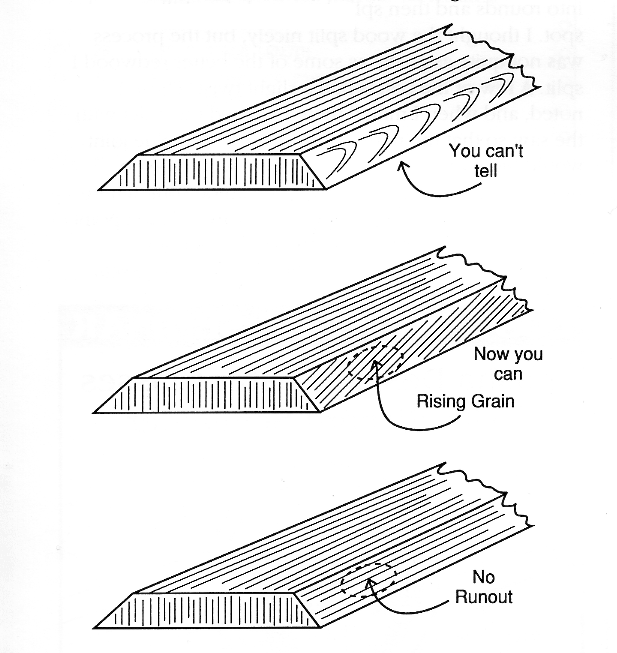I have been reading the back issues of Guitarmaker from cover to cover on my lunch breaks and I have to say... these are JAM PACKED FULL of great information. I would HIGHLY encourage you to buy as many back issues of the magazine as you can afford.

But today I ran across an article I thought I would share. Forgive me for reposting this in its entirity, but I thought it would be something everyone would enjoy.
***** Begin *****
Detecting Runout
by Craig Carter
I thought I would submit the following information regarding detecting runout in soundboard blanks. Believe it or not, I did not figure this out until recently, when I milled the billets of fir. I went at the tree the way I usually do with redwood; that is, I bucked the log into rounds and then split the rounds into billets on the spot. I thought the wood split nicely, but the process was not quire as cushy as some of the better redwood I split. A few of the billets had a slight twist. These I noted, and when I milled them I aligned the billet with the saw so that the narrow grain, where the glue joint would be, was oriented so that there would be no run out there. Runout from the twist would be somewhere in the far reaches of the upper bout. Anyway, the point is that while I was stickering the cut blanks, some people were talking to me and I mixed up those sets with the regular sets. I couldn't really tell visually which were the twist sets and which were the regular ones. So after some heavy thinking and looking at offcuts, I came up with this way of seeing runout in the blanks. For all I know, everyone else already knows this, but Steve Henderson at Breedlove Guitars says "not true" and it was he who suggested that I send it in to you. Here are two common ways to detect runout:
1) Look for a difference in the darkness between the halves of a finished guitar top. Rising grain reflects grain differently than falling grain. If the top has runout one side will necessarily have rising grain and the other will have falling grain.
2) If the top is still in rough-sawn form, look for a difference in "fuzziness" between the front and back of the same piece of wood, or between different areas of the same side. This can be an indicator of gernal runout or localized short grain.
For the builder, the first method is kind of late, and the second ethod is kind of iffy.

ANOTHER WAY, if your blanks have a little width to spare, is to plane a 45 degree bevel along both long edges of one of the bookmatched halves. Now look at the planed edge from the side. Any runout or localized short grain will e obvious. I recommend planing BOTH edges, because if the billet had twist the resulting runout may appear in one edge and not the other. With very close grained wood, such as redwood or cedar it is enough to plane a very small bevel.

